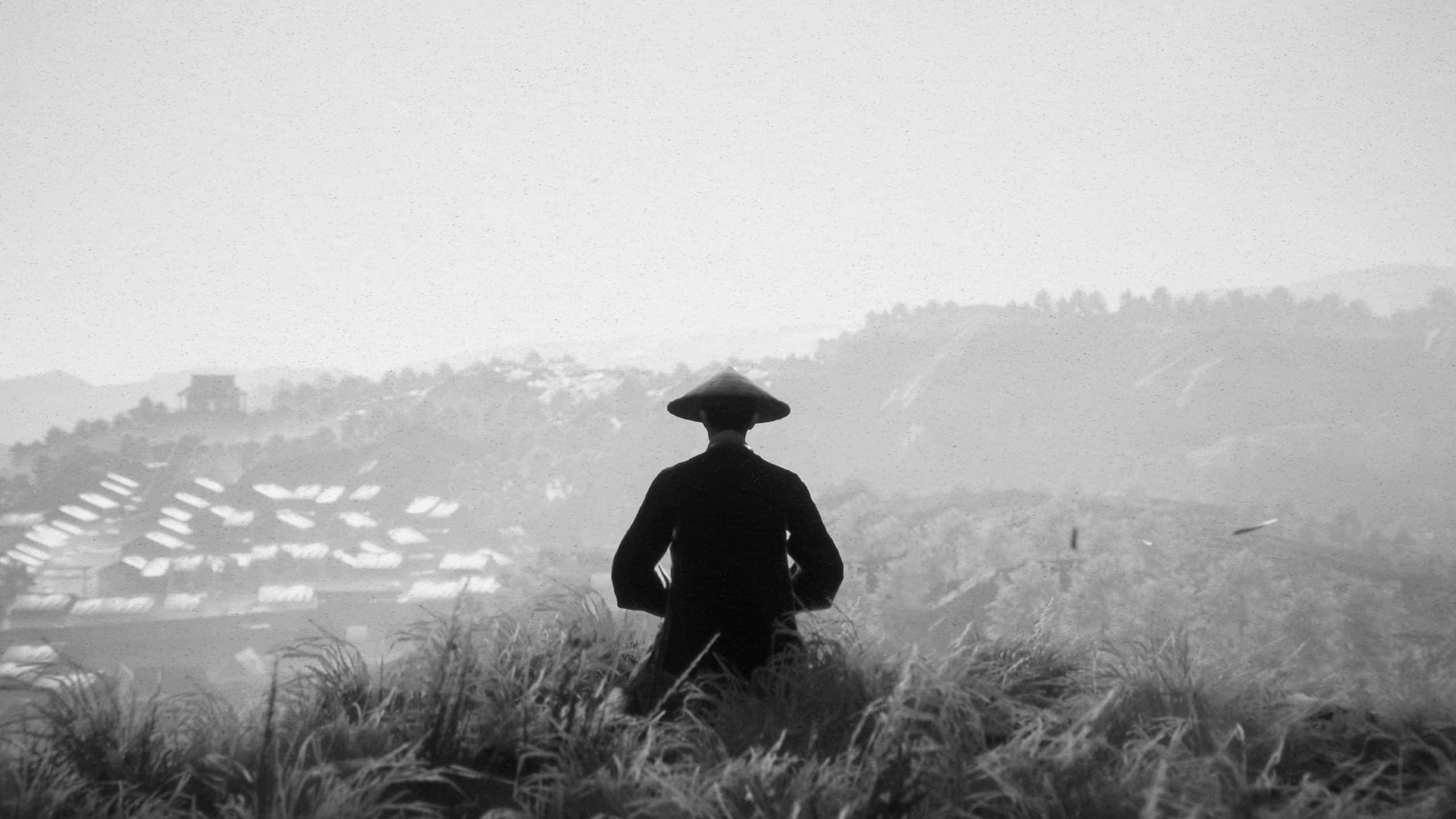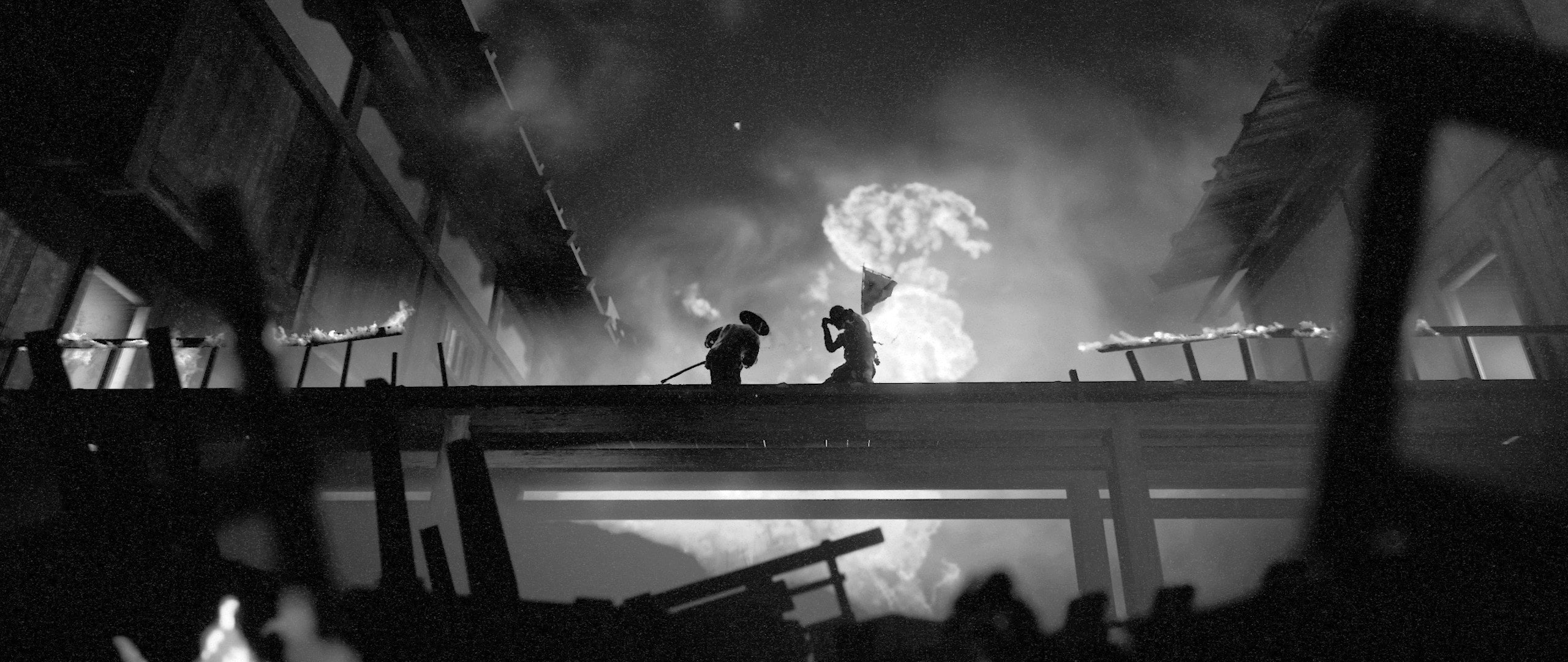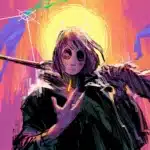Trek to Yomi is a cinematic action-adventure game from Leonard Menchiari, Flying Wild Hog, and Devolver Digital. Leonard Menchiari previously worked on the remaster of The Eternal Castle, so it’s no surprise to see them develop Trek To Yomi, which is arguably one of the most stunning games I’ve played all year. In my Trek to Yomi Review, I’ll go over what I think about their latest title, and what it brings to the medium.
Breathtaking Presentation
Trek to Yomi, is one of the most beautifully rendered games I’ve ever played. It’s a faithful homage to the works of legendary Japanese filmmaker, Akira Kurosawa. Many games set in Japan have tried to pay respect to their work, but Trek to Yomi might be the closest one we’ve seen to not only emulate that distinct visual style but everything else it brings to the experience.

It’s not just a black and white filter, but something developed with that color scheming in mind. This is one of the first games where the “film grain” option was warranted. If you’ve seen any Kurosawa film, you’ll notice how there are wide shots, with movement inside, exaggerated weather effects, realistic battles with massive blood splatter, and a feeling of uniformity in every aspect of the presentation. Trek to Yomi manages to portray that in spades.

It’s a gritty, highly detailed world that doesn’t shy away from showing the gruesome aftermath of war, and how much destruction is caused when even small villages are razed. The game features fixed camera angles, that always put you in the best spot given the context of the scene. I’ve spent minutes observing each scene, which felt like deliberate sets, carefully crafted with hundreds of details. It’s a massive achievement to convey so much in a 2.5D presentation.

Every new area, room, and forest felt like it was adding to the story, world, and the current state of the character’s mind. If I had to recommend this game for its presentation alone, I would easily do it, just for that visual experience.
The level of destruction shown here isn’t restricted to just the architecture though. You’ll see people crying out, animals fleeing, and scores of dead people. It’s a grotesque, but historically accurate depiction of the conflict during Japan’s Edo period. This dedication to accuracy adds a lot to the narrative as well.
Story and Characters
Trek to Yomi follows the story of Hiroki, a Samurai who promises his dying master that he would protect their people, no matter what. His town is struck with tragedy as a group of bandits invade his land in his absence, and he sets out to avenge, and protect his people.

It’s a simple enough premise, that we’ve seen multiple times in Japanese cinema, and literature. However, the storytelling is deeper than its premise. It takes players on Hiroki’s journey through not only the land of the living but the dead as well.
While sparse, and direct, the writing here is strong, and every action feels like it has weight. The game wastes no time with any form of exposition and is more concerned with what is happening on-screen. It deals with themes of regret, honor, love, and a sense of duty that we’ve seen in Kurosawa’s work as well.
The story doesn’t drag on either and does give you some choices near the end. Overall, it doesn’t overstay its welcome and felt like a complete adventure. Your choices will impact the ending, so choose wisely.
The game does go to some interesting places when it comes to Japanese mythology. You’ll find lore collectibles scattered through the game that give you some tidbits about different Yokai, and Japanese myths. Most of the third act deals with the more fantastical elements, but it’s a lot about the personal journey of Hiroki than anything else.
Gameplay and Combat
This is arguably one aspect where the game doesn’t match up in quality when compared to its setting and presentation. Trek to Yomi features a fairly simple combat system with light, heavy attacks, blocking, and parrying. The more you play, the more combos you unlock to use those attacks in a different order. Ultimately, your goal is to master the parry timing, and not get hit.

The problem is that the parry system feels very unreliable. The tutorial explains that you need to tap the Block button as soon as the enemy’s weapon glints. However, despite trying my hardest to read visual cues, I never felt like my parries were based on the glint itself, but rather on the timing of different enemy types, and their attacks. In something like Sekiro, the parry window is wide enough for you to react properly, but here, it’s better to just spam the block button, and hope the parry lands. Some of the incoming attack animations (especially the thrust attack) are weirdly interrupted into higher attacks as you parry, which can feel a bit jarring.

Despite the number of combos, it’s clear that some of those are just better than the rest. This meant you could keep spamming a combo you liked instead of experimenting with other ones. Combat almost became fairly repetitive in the final chapters, as you kept fighting the same enemy types over and over again. Even though these encounters aren’t long, and you can take down enemies fast, they still feel like a chore.
Boss Fights
This brings us to another weaker aspect that’s disappointing. Most of the thematically relevant boss fights are solid, and a lot of fun to fight. Each encounter with the game’s main antagonist is cinematic, memorable, and a test of your skill.

The same can’t be said for the Yokai boss fights that simply don’t belong in this game. It’s like you’re fighting something from Nioh, or Dark Souls, even though you were being trained to fight humanoid enemies.

Their attacks hit harder than necessary, and a lot of those can’t even be parried. It becomes more about trial and error than anything.
This dissonance between boss types can lead to a lot of frustration, and you end up having to throw everything you have at them instead of learning them.
Audio and Score
The game only features Japanese Audio, and the voice acting is excellent. The score is ever-present, haunting, and absolutely majestic at times. The slashes and arrows hissing through the air all sound great.
Verdict
Trek to Yomi is a stunning game, that goes above and beyond to pay homage to one of cinema’s greatest. It doesn’t shy away from depicting the brutality of war and each frame is full of details to create a grounded, and beautiful world. Despite its impeccable presentation, Trek to Yomi’s combat, and uneven boss fights get in the way of true greatness. It’s still worth experiencing for its visuals, and audio alone, with some caveats attached when it comes to gameplay.

Trek to Yomi is out now on PC and consoles. It is also part of the Xbox Game Pass subscription.
We have a few tips to get you started, so make sure to check those out. If you are running into any crashes, make sure to read our troubleshooting guide as well.
While you are here, make sure to check out our reviews for other Devolver Digital titles including Weird West, Serious Sam: Siberian Mayhem, and Shadow Warrior 3.
What did you think of our Trek to Yomi Review? Share what you think about it in the comments below.
This review is based on the PC version of Trek to Yomi. The key was provided by Devolver Digital











